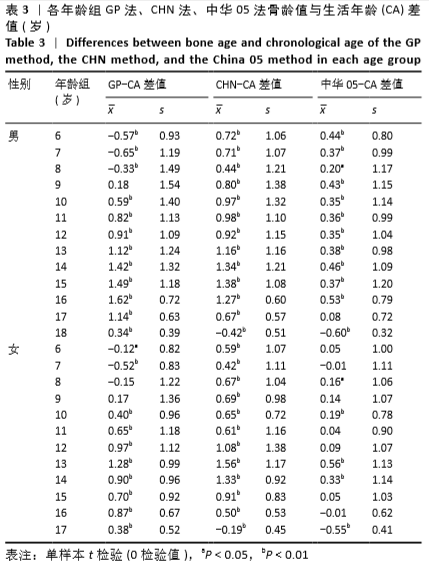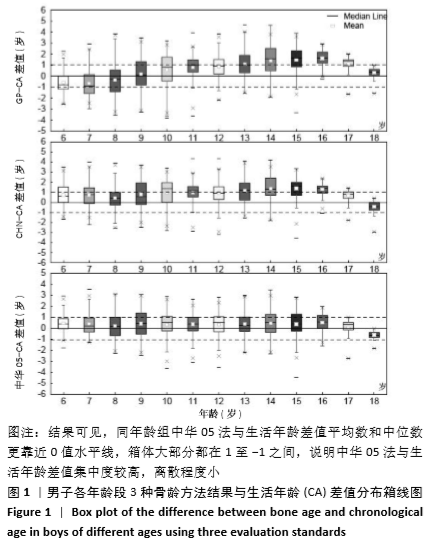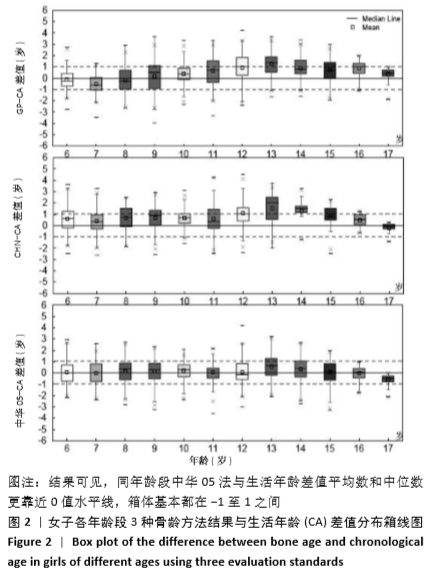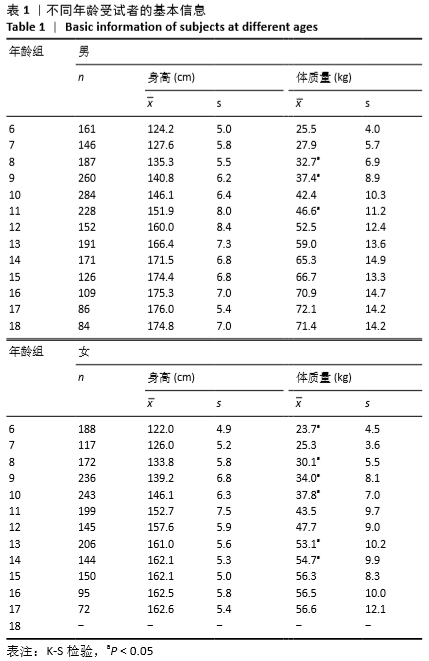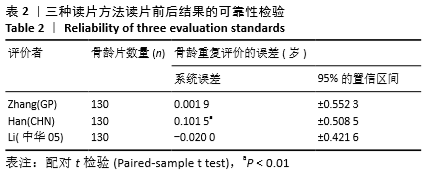中国组织工程研究 ›› 2021, Vol. 25 ›› Issue (5): 662-667.doi: 10.3969/j.issn.2095-4344.2995
• 骨组织构建 bone tissue construction • 上一篇 下一篇
Greulich-Pyle图谱法、CHN法和中华05法评估儿童青少年骨龄的比较
潘其乐1,张 洪2,周慧康3,蔡 广1
- 1上海体育科学研究所(上海市反兴奋剂中心),上海市 200030;2 上海市金山区青少年业余体育学校,上海市 201508;3 上海市徐汇区第二青少年业余体育学校,上海市 200030
Comparison of the Greulich-Pyle method, the CHN method and the China 05 method for assessing bone age in children and adolescents
Pan Qile1, Zhang Hong2, Zhou Huikang3, Cai Guang1
- 1Shanghai Research Institute of Sports Science (Shanghai Anti-Doping Center), Shanghai 200030, China; 2 Shanghai Jinshan Amateur Athletic School, Shanghai 201508, China; 3Second Youth Amateur Sports School of Xuhui District, Shanghai 200030, China
摘要:
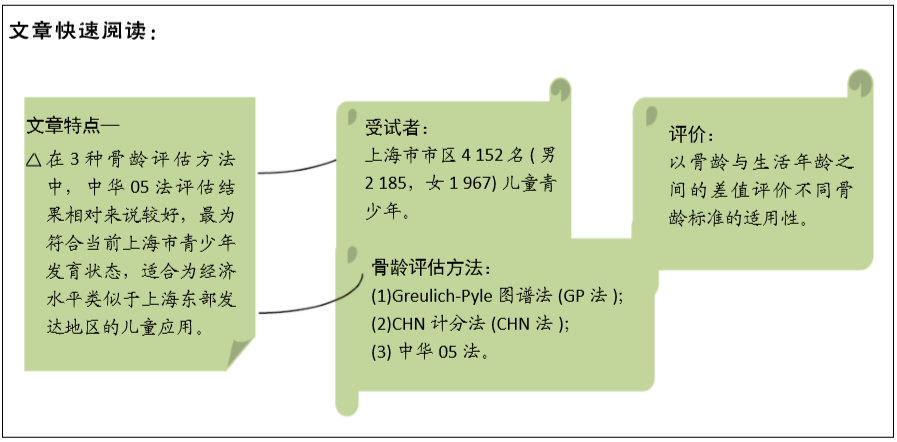
文题释义:
骨龄:是骨骼年龄的简称,需要借助于骨骼在X射线摄像中的特定图像来确定。通常要拍摄人左手手腕部的X射线片,医生通过X射线片观察左手掌指骨、腕骨及桡尺骨下端的骨化中心的发育程度,来确定骨龄。
骨龄结果与生活年龄差值:发育成正态分布的群体,大多数发育应该是同步的,发育偏晚或者偏早,只是少数,因此发育呈正态分布的群体的骨龄与生活年龄应该是同步的,也就是说该群体骨龄与生活年龄是一致的。因此骨龄评估方法效果需要比较群体骨龄结果与生活年龄差值大小,差值越趋近于0,说明该骨龄评估方法越符合当地儿童的生长发育实际情况。
背景:目前在国内医学和体育领域有3种骨龄评估方法较为广泛应用,分别为Greulich-Pyle图谱法(GP法)、CHN计分法(CHN法)、中华05法,哪种方法更适合本地区的儿童青少年评估,需要进行大样本研究实证。
目的:以上海市健康儿童为样本,比较GP法、CHN法、中华05法骨龄,为经济发达东部地区儿童青少年选用合适的骨龄评估方法提供参考。
方法:受试者为上海市市区4 152名(男2 185,女1 967)儿童青少年,分别以GP法、CHN法、中华05法骨龄标准评价所有受试者左手腕部X射线片骨龄,以骨龄与生活年龄之间的差值评价不同骨龄标准的适用性。项目经上海体育科学研究所伦理委员会通过,受试学生放家长均知情同意。
结果与结论:①GP法,6-8岁男女骨龄与生活年龄差值为-0.12至-0.65岁,其中女子8岁差异无显著性,其他组均有差异具有显著性,≥9岁差值为0.18-1.62岁,除9岁年龄段外,其他组差异均具有显著性;②CHN法,男6-17岁和女6-16岁,骨龄与生活年龄差值为0.42-1.56岁(P < 0.01);③中华05法,男子6-16岁,骨龄与生活年龄差值在0.20-0.53(P < 0.01),17岁差值为0.08(P > 0.05),18岁组为-0.60(P < 0.01);女6-17岁,骨龄与生活年龄差值在-0.01-0.56,大部分年龄组差异无显著性意义;④在3种评估方法中,中华05法评估结果相对来说较好,最为符合当前上海市青少年发育状态,提示中华05法更适合于经济水平类似于上海东部发达地区。3种评估方法都有一定的局限性,由于青少年生长长期趋势影响,也有必要再次修订目前使用的各种骨龄评估标准。
https://orcid.org/0000-0001-6842-4027 (潘其乐)
中国组织工程研究杂志出版内容重点:组织构建;骨细胞;软骨细胞;细胞培养;成纤维细胞;血管内皮细胞;骨质疏松;组织工程
中图分类号:
